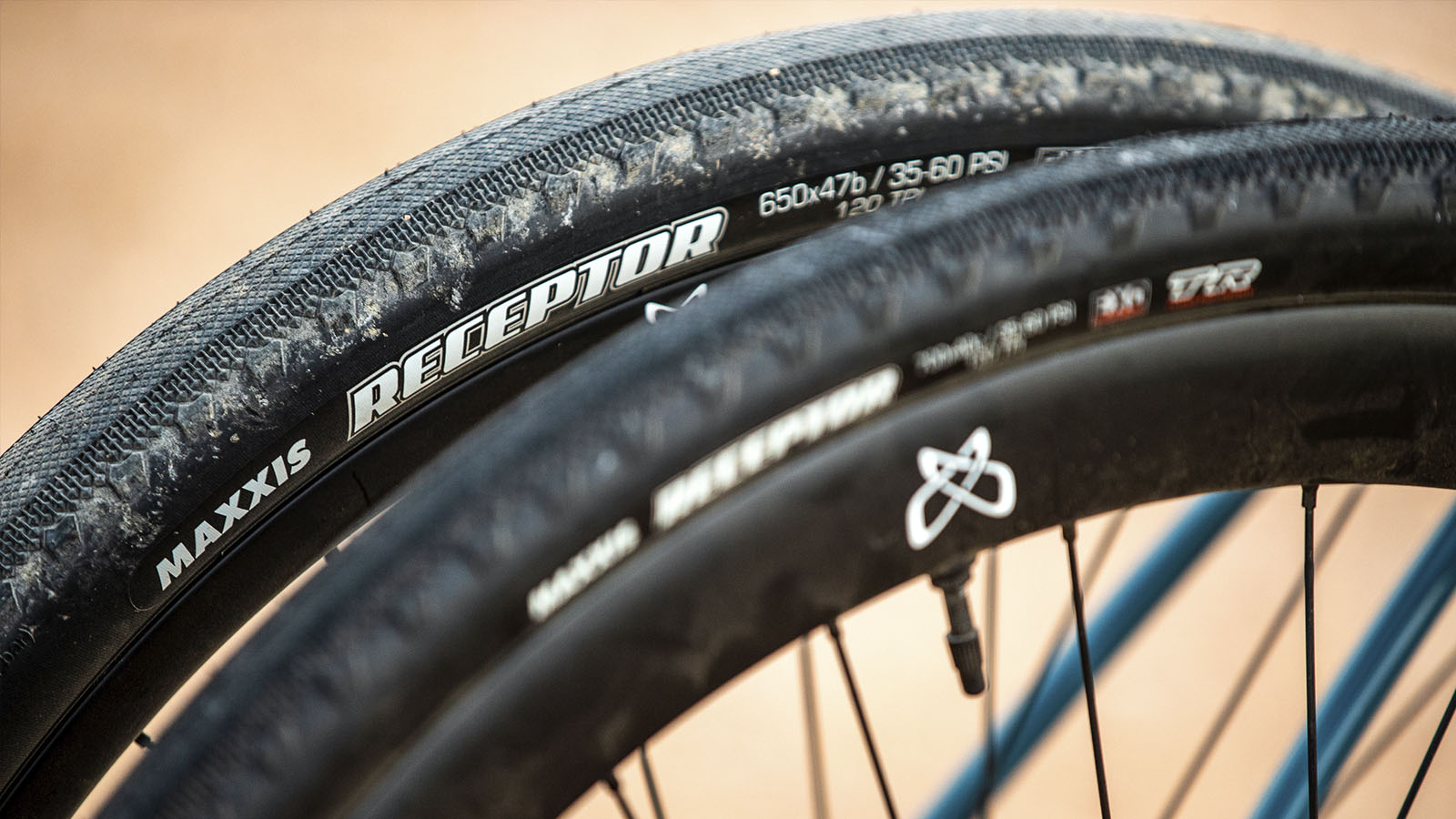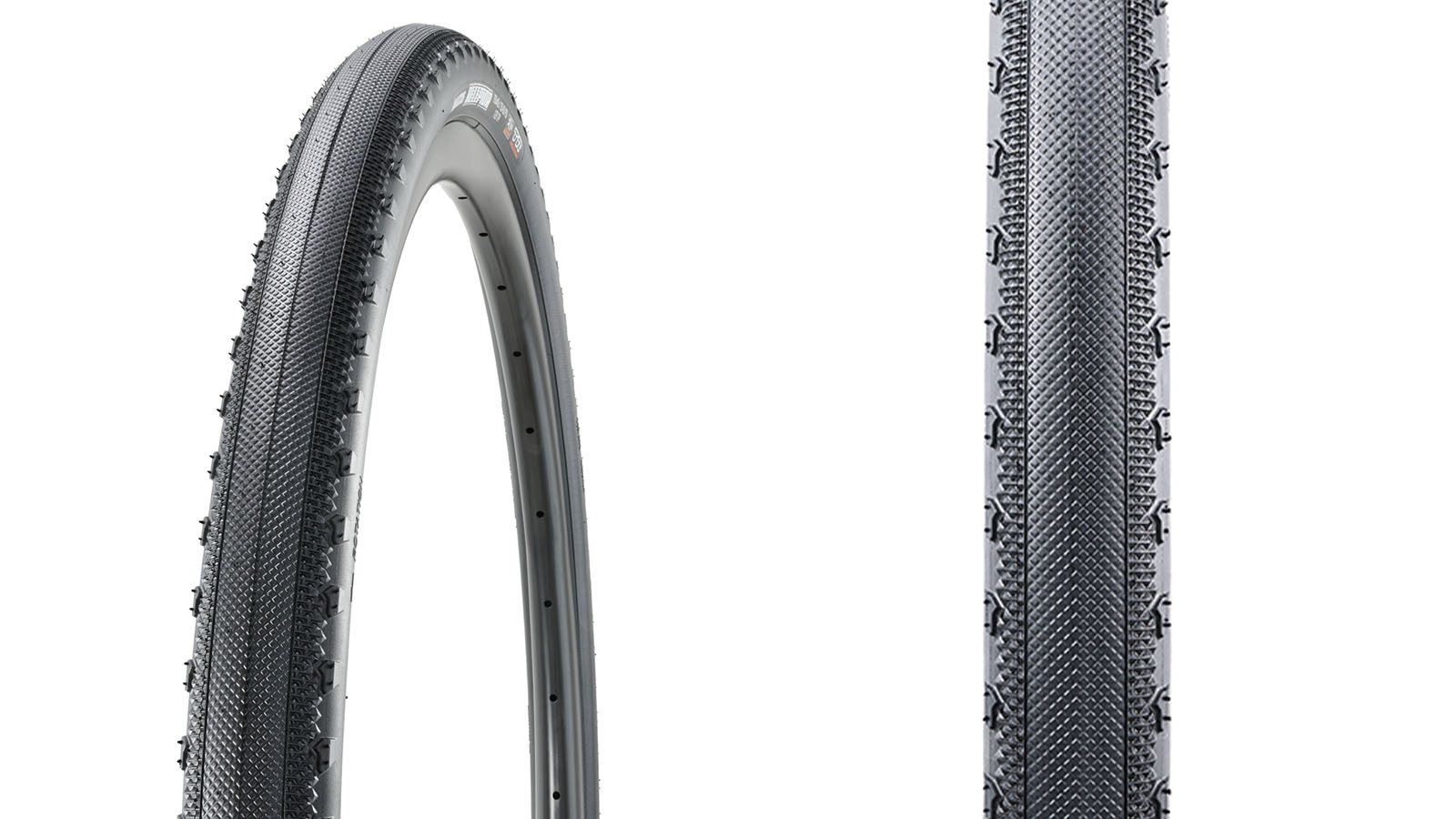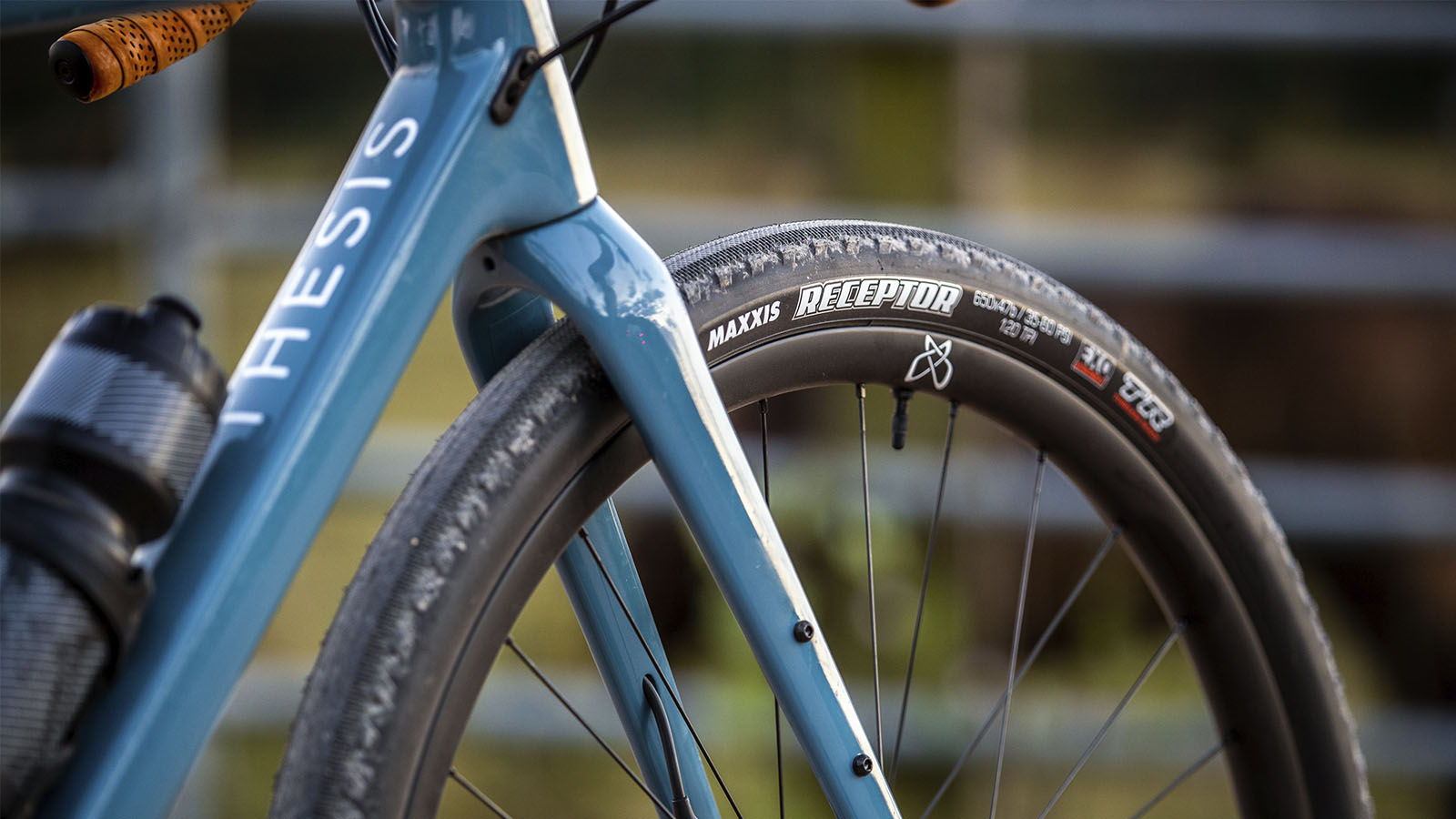Fly over hardpack gravel with the new Maxxis Receptor
New semi-slick designed for fast and loud riding on hardpack dirt

With the gravel boom not showing any signs of slowing down, Maxxis has added a new tire to fill a notable gap in its range of all-terrain rubber. The new Receptor is a semi-slick that slots in perfectly between the Velocitia and Rambler, both of which rank high among the best gravel tires on the market.
The Velocitia is a high-performance fully-slick tire designed for 90-percent on-road riding, but has enough puncture protection and volume to keep you out of trouble, should you choose to take the fun way home. The Rambler on the other hand has a 60/40 off/on-road bias, and is knobby throughout the casing. It has a tightly packed center strip and well-supported shoulder tread; designed to deliver traction over a variety of surfaces, without introducing too much drag. The new Receptor falls smack dab in between the two.
“The Receptor is a great option for riders who don’t want to choose between our high-volume Velocita slick and the knobbier Rambler,” said Aaron Chamberlain, Maxxis’ Bicycle Marketing Manager.
With a knurled center strip and file tread in the transition zone, the Receptor is a fast-rolling gravel tire, best suited to smoother hardpack surfaces, both gravel and tarmac. To prevent the dreaded front-wheel wiggle when you enter a dusty corner with too much speed, the Receptor has shoulder knobs to dig in and provide the purchase required to get you around the bend with the rubber side down.

Built around a 120TPI tubeless-ready casing, the Receptor utilizes Maxxis’ dual-compound rubber in the tread for the right balance between rolling resistance and grip, for both cornering and braking across both paved and unpaved roads.
The tubeless-ready casing uses a carbon fiber bead and extended bead cushion for strength, security, and easy seating. To set the Receptor up tubeless you'll need liquid sealant as the rubber used in the carcass needs it to maintain the airtight seal, but even with the tire sealing solution of your choice, the system still weighs less than UST, and offers the added bonus of self-healing punctures.

Maxxis is far and away the industry leader when it comes to mountain bike tires, and has borrowed the technology used for its XC and trail rubber to ensure the Receptor lives up to the same standard. The Receptor has the brand's EXO sidewall protection, which sees a densely woven, lightweight, and flexible fabric applied just beneath the rubber to prevent cuts and tears that would usually end in a trip to the bike shop.
The EXO sidewall is designed to fend off exceptionally rocky and treacherous trails that would slice and dice a tire like Jason on Friday the 13th, and it's used in the brand's Minion DHF and DHR II, Ikon and Aspen MTB tires. Given these tires will survive everything from your local MTB trails to the nastiest World Cups on the circuit without issue, the Receptor should be pretty darn resilient.
At launch, the Receptor is available 700x40mm and 650x47mm; the tires tip the scales a 429g and 484g, respectively, though the tan wall 700x40 is 12g heavier, weighing 441g.
Get The Leadout Newsletter
The latest race content, interviews, features, reviews and expert buying guides, direct to your inbox!
Cyclingnews is the world's leader in English-language coverage of professional cycling. Started in 1995 by University of Newcastle professor Bill Mitchell, the site was one of the first to provide breaking news and results over the internet in English. The site was purchased by Knapp Communications in 1999, and owner Gerard Knapp built it into the definitive voice of pro cycling. Since then, major publishing house Future PLC has owned the site and expanded it to include top features, news, results, photos and tech reporting. The site continues to be the most comprehensive and authoritative English voice in professional cycling.